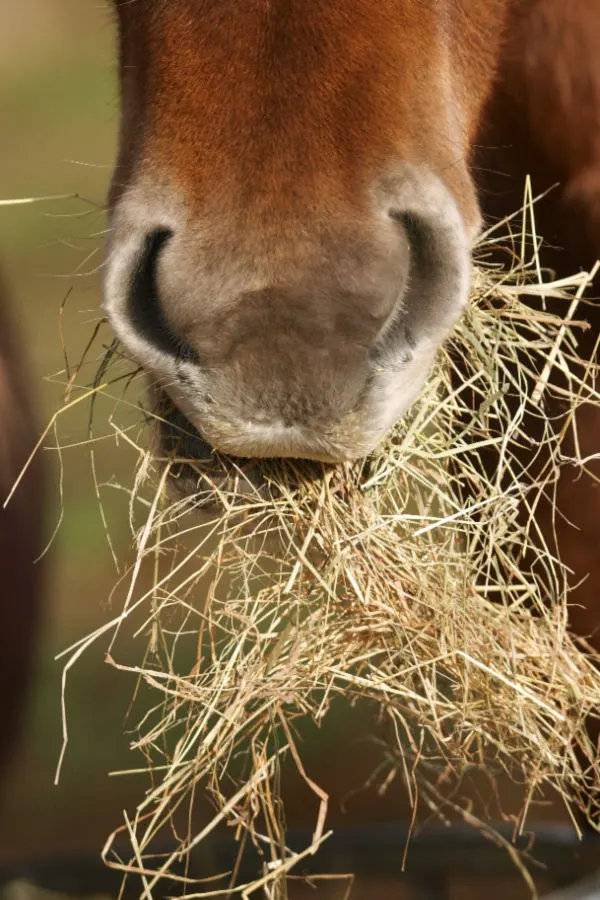Without a doubt – the single best method to stop weeds from overtaking your garden year in and year out is with mulch. However, and this is key – the real secret to total weed-free success is how and when you mulch, and selecting the right mulch to use!
When anyone ever asks us the secret to a maintaining a productive garden, our first answer is always to use mulch. And lots of it! Yes, compost is incredible for plants. As is watering and fertilizing plants on a regular schedule. Of course, rotating your crops and planting a cover crop in the fall is critical too.
But at the end of the day, mulching your garden truly is the best secret to success. Not just because it can put a stop to endless weeding chores, but because it helps your garden in so many other ways as well.
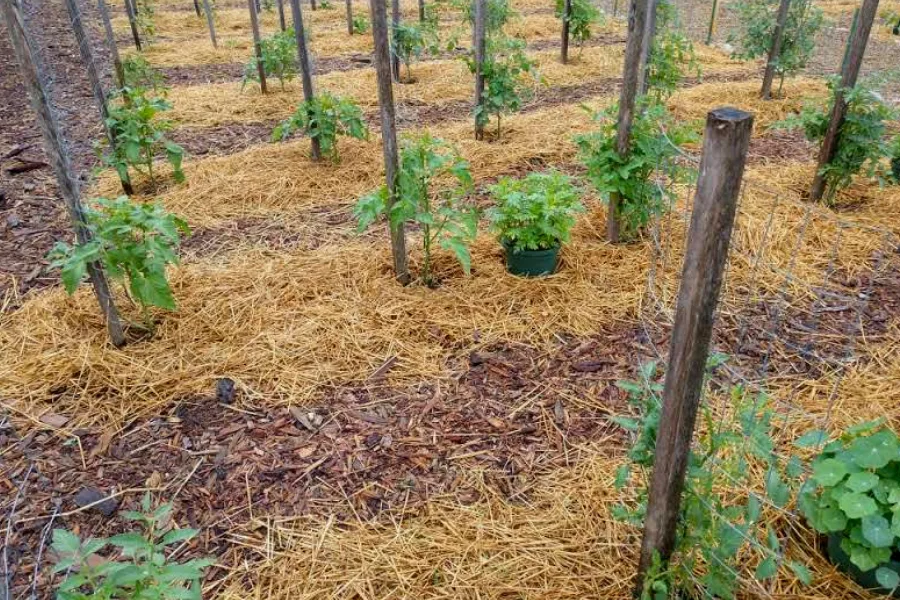
The list of benefits for using mulch in the garden is long and powerful. It is a soil insulator, helps retain valuable moisture, and most of all, an incredible weed suppressor. It can also help protect plants from disease and damage. Best of all, when the right mulch is chosen, it helps to increase soil fertility as it breaks down over time.
The end result is a more productive, healthier garden. And, most importantly for the gardener, one that needs little to no weeding. With all of those benefits in mind, here is a look at how to mulch your garden to stop weeds forever!
How To Mulch Your Garden To Stop Weeds
One thing is for sure, not all mulches are the same. Some are great to use around plants, while others should only be used where you walk. There are also some mulches to avoid entirely in the garden as they can actually be harmful to plants.
The ideal method for a weed free, low maintenance garden really comes down to choosing the right mulch for the specific areas within a garden – and then applying it in the right thickness to do the job.
Listen In Below To Our Podcast On Eliminating Garden Weeds!
Mulching Where You Walk – How To Stop Garden Weeds With Mulch
Let’s take a look first at the walking areas of your garden These are the areas between plants and around the edges of your garden. Unfortunately, these areas often require the most work to keep weed free, even though they produce zero crops.
This is exactly where mulch can help save a lot of time and work in your garden! Why spend needless hours hoeing, rototilling and re-tilling your non-productive areas? Instead, this is where you need to place down a heavy layer of mulch to stop weeds permanently.
These non-growing areas are the perfect place to use low-cost mulches such as wood chips, shredded bark or even whole leaves. But it is important to lay down a thick layer here. A few inches simply wont last. Nor will it snuff out existing weeds.
We use a deep, six inch layer of natural bark and wood chips from a local sawmill. It breaks down slowly and totally eliminates the need for us to spend time on these “no-grow” areas of our garden.
Wood chips can often be locally sourced, sometimes even for free from local tree trimmers and landscapers. Whole leaves, of course, can be collected for free every fall.
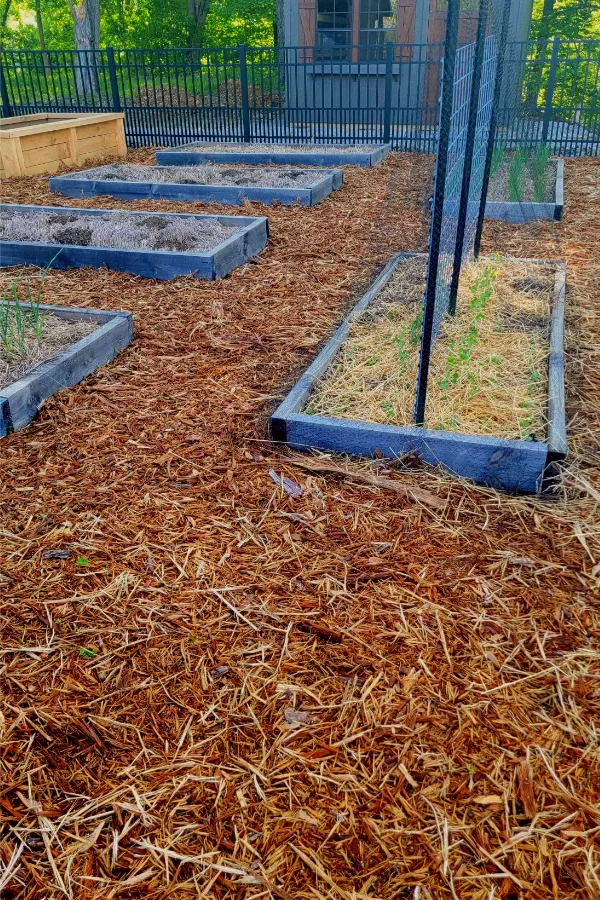
The important thing is to mulch it heavy to eliminate you having to work these areas ever again. The thicker, the better! No grow zones of your garden should never be consuming more time than where you actually grow your food. See : How To Create A No Till Raised Row Garden – Garden Easy!
Mulching Around Plants – How To Stop Garden Weeds With Mulch
So what about mulching around where your plants grow? Selecting the right mulch to use around plants is critical. A good plant mulch first needs to keep out competing weeds. When weeds grow near a vegetable plant, they aren’t just unsightly, they also steal moisture and nutrients the plant needs.
A good plant mulch should also help insulate roots, retain moisture, and as it breaks down, help to build nutrients into the soil that your vegetable plants can then use.
There are actually quite a few excellent plant mulches you can use in your garden. Straw, shredded leaves and grass clippings are three of the best. As you will see below, even compost can be used to mulch right up around plants as well – and with some pretty helpful benefits!
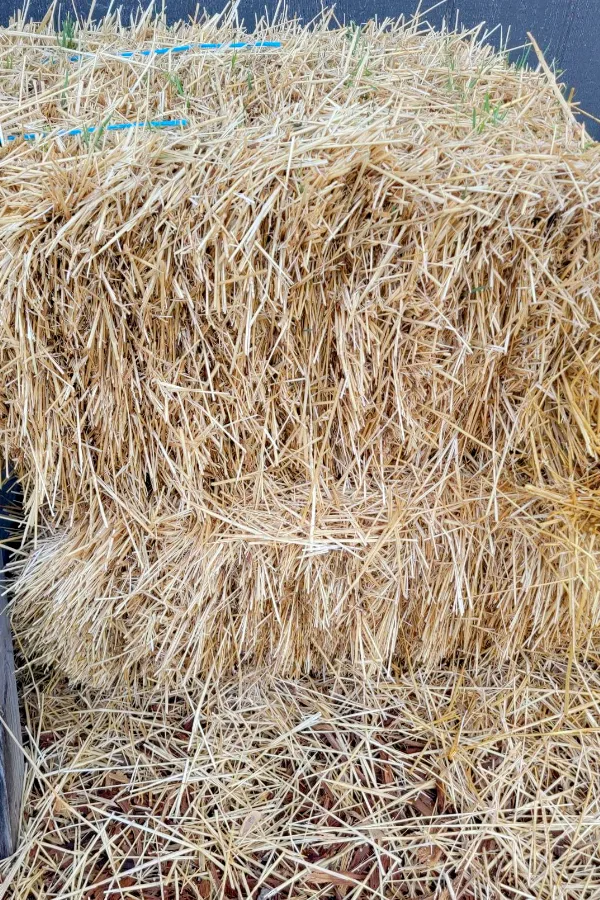
Here is a look at each of the plant mulches we use along with how we apply them. One special note, as the price of straw continues to climb, we have been growing our own garden mulch the past few seasons by planting a patch of cereal rye and oats and then mowing and bagging it for our plant mulch.
Not only is it inexpensive – the grass mulch has really helped power our plants even more! For more on that, check out our article How To Grow Your Own Inexpensive Garden Mulch!
The Best Mulch To Use Around Plants – And How To Use It!
Compost
Compost can really help protect and power plants as a mulch. We actually use it around every single plant. We place a two-inch thick layer of compost about 8″ in diameter around the base of each plant.
This mulch not only stops weeds and insulates plants from temperature swings, but every time it rains or we water, the nutrients from the compost leach down into the soil to the roots of our vegetable plants. It is a win-win for plants!
One note on compost, we still apply a few more inches of either straw or clippings on top of the layer of compost. Compost is very similar to soil, and if exposed it can usually start to sprout any weed seeds that find their way into the garden.
Grass Clippings
Grass clippings are an excellent choice for using around plants. They are excellent for suppressing weeds. And, as the clippings dry and break down, they add valuable organic matter to the soil as well.
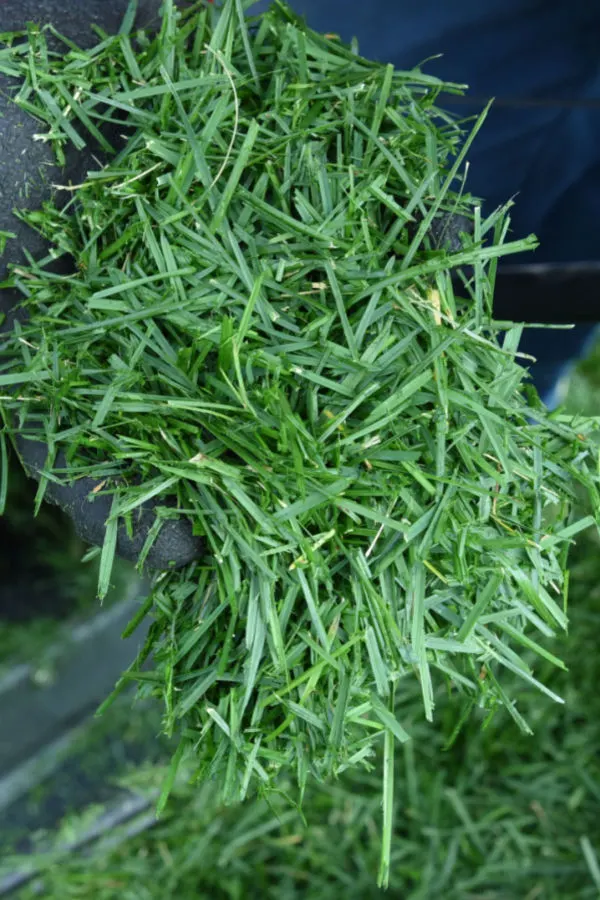
When first applied, fresh grass clippings leach valuable nitrogen into the soil. As long as you do not treat your lawn, you can simply bag or rake the clippings up and apply. Treated lawns should be avoided. The chemicals can easily leach into plants and in many cases kill them.
We now plant a small patch of rye and oats to create our own grass clippings mulch. It germinates fast, grows quickly, and we use our push mower and bagging attachment to collect them.
Shredded Leaves
Whole leaves make a great weed stopping mulch for walking rows, but not for around plants. Whole leaves break down slowly and bind together. It is one of the reasons they are great for walking rows. But shredded leaves allow air and water through to plants while still keeping out weeds.
Keep in mind that some leaves are better than others as mulches for stopping weeds in the garden. Maple, Birch, Ash, Beech and fruit tree leaves are excellent choices.
Oak leaves and green pine needles on the other hand are not a good choice. The leaves of oak trees as well as green pine needles are acidic. When using them as a plant mulch, they can knock a soil’s PH out of balance over time. Aged pine needles are okay, contrary to popular belief, they are not acidic once dry.
Straw
Straw is an excellent mulch to use nearly everywhere in the garden. In the growing rows, near plants and even in the walking rows. The only drawback is that it can be pricey, especially depending on where you live. We still use it in some places, but more sparingly due to the cost.
Mulches To Avoid – How To Stop Garden Weeds With Mulch
When it comes to garden mulch, there are a few you will want to avoid altogether. At the top of the list is hay. Hay is not the same as straw. And when used, it will create a lot of weed problems in your garden. Short and long term.
Straw bales are the leftover stubble of a crop in the field. But hay bales are from the entire growth, and that includes seed heads and all. Using hay in the garden is like planting thousands of weed seeds all at once.
Other mulches to avoid using are bagged commercial mulches. Although commercial mulches are great for flowerbeds, they are not a good choice for gardens. Most commercially available hardwood mulches are treated with artificial colorants, dyes, and fungicides. Because of that, placing them near consumable plants in the garden should be avoided.
Make this the year you mulch your garden with a thick protective coat of mulch and enjoy healthier plants, less watering, and weed-free happiness! Happy Gardening, Jim and Mary.
Jim and Mary Competti have been writing gardening, DIY and recipe articles and books for over 15 years from their 46 acre Ohio farm. The two are frequent speakers on all things gardening and love to travel in their spare time.
As always, feel free to email us at thefarm@owgarden.com with comments, questions, or to simply say hello! You can sign up for our free email list in the subscribe now box in the middle of this article. Follow us on Facebook here : OWG Facebook. This article may contain affiliate links.

